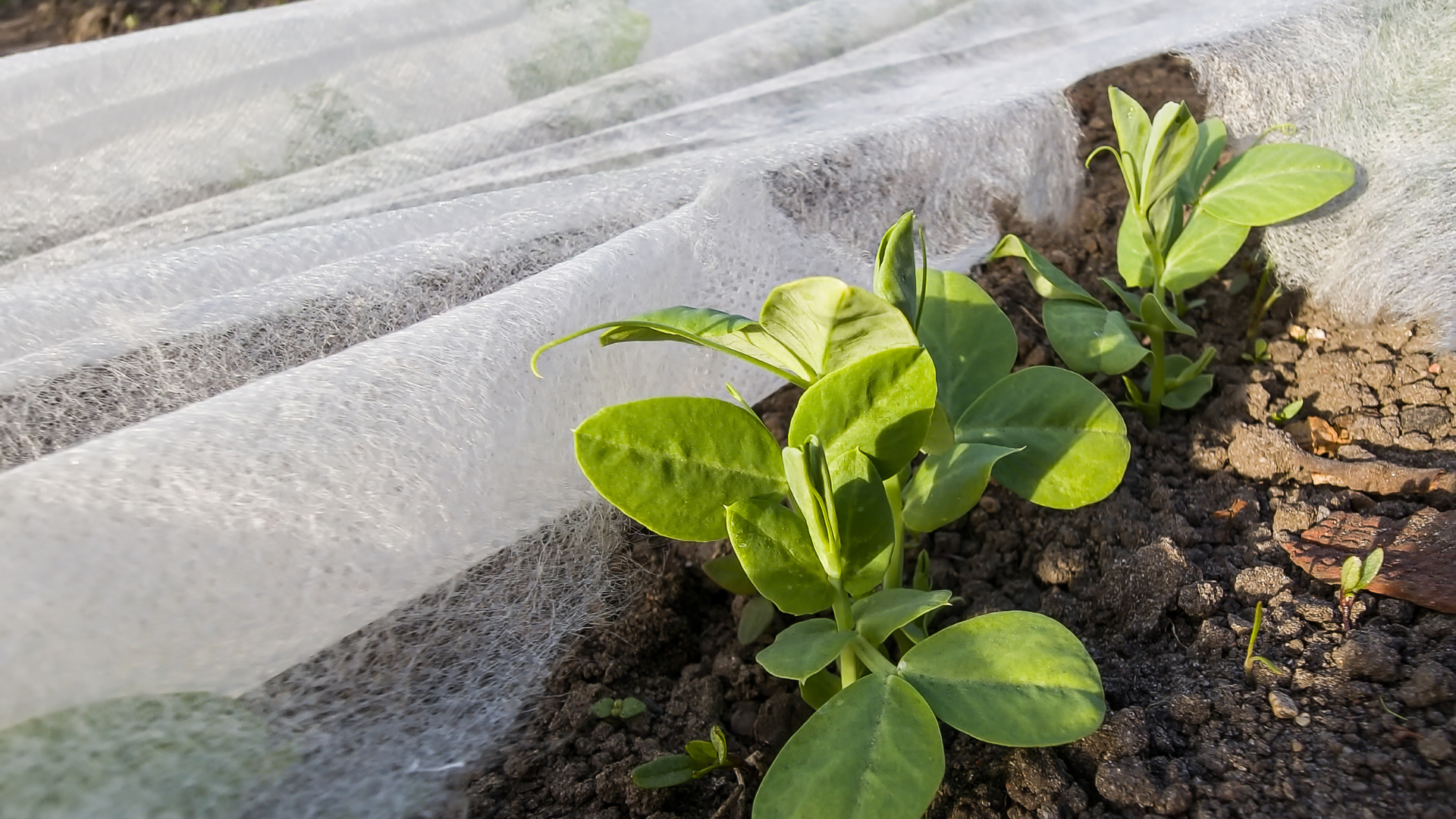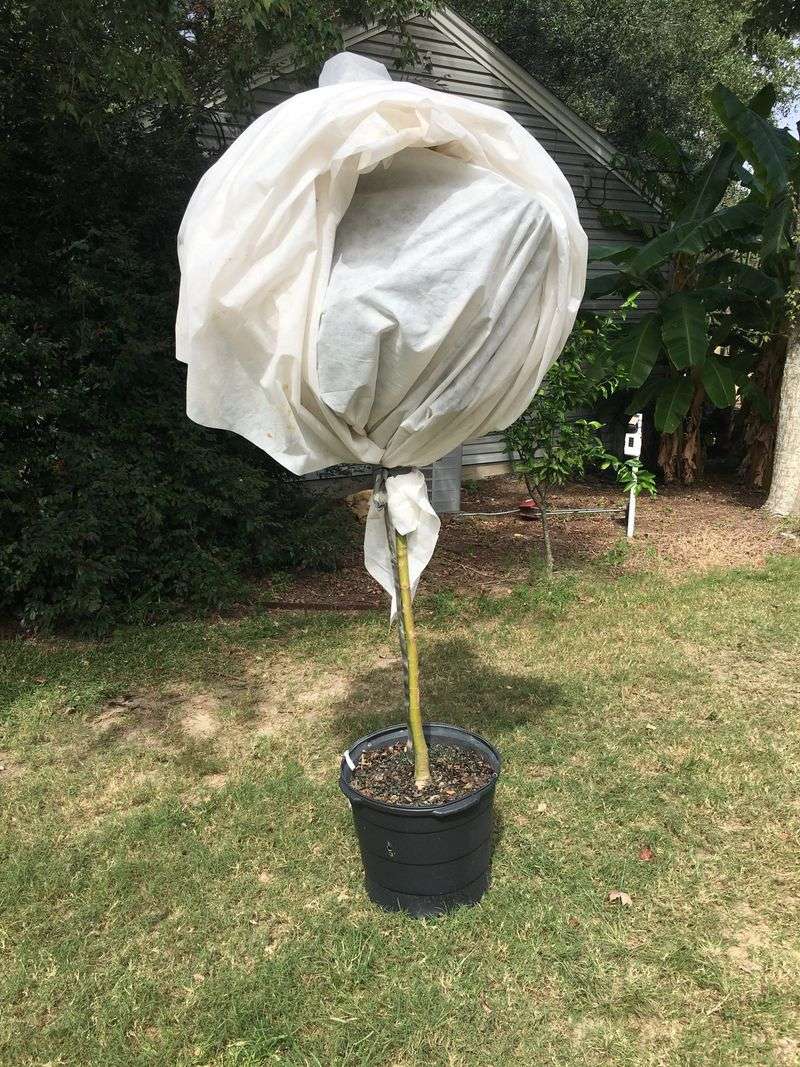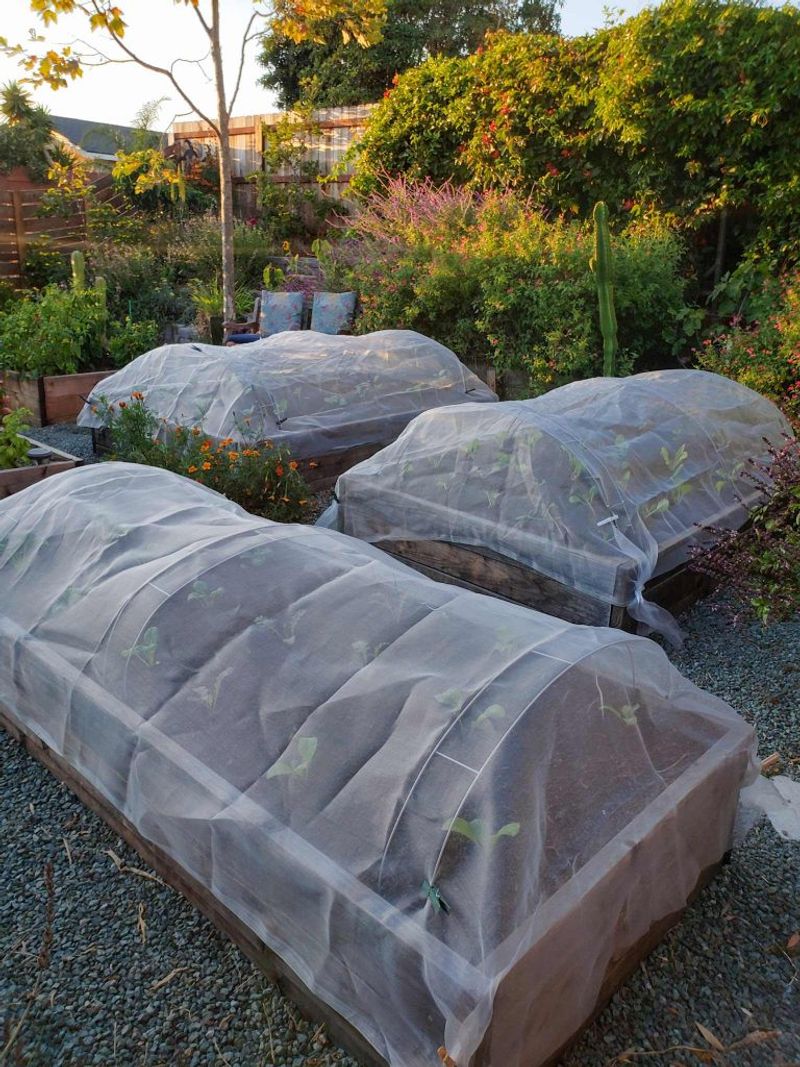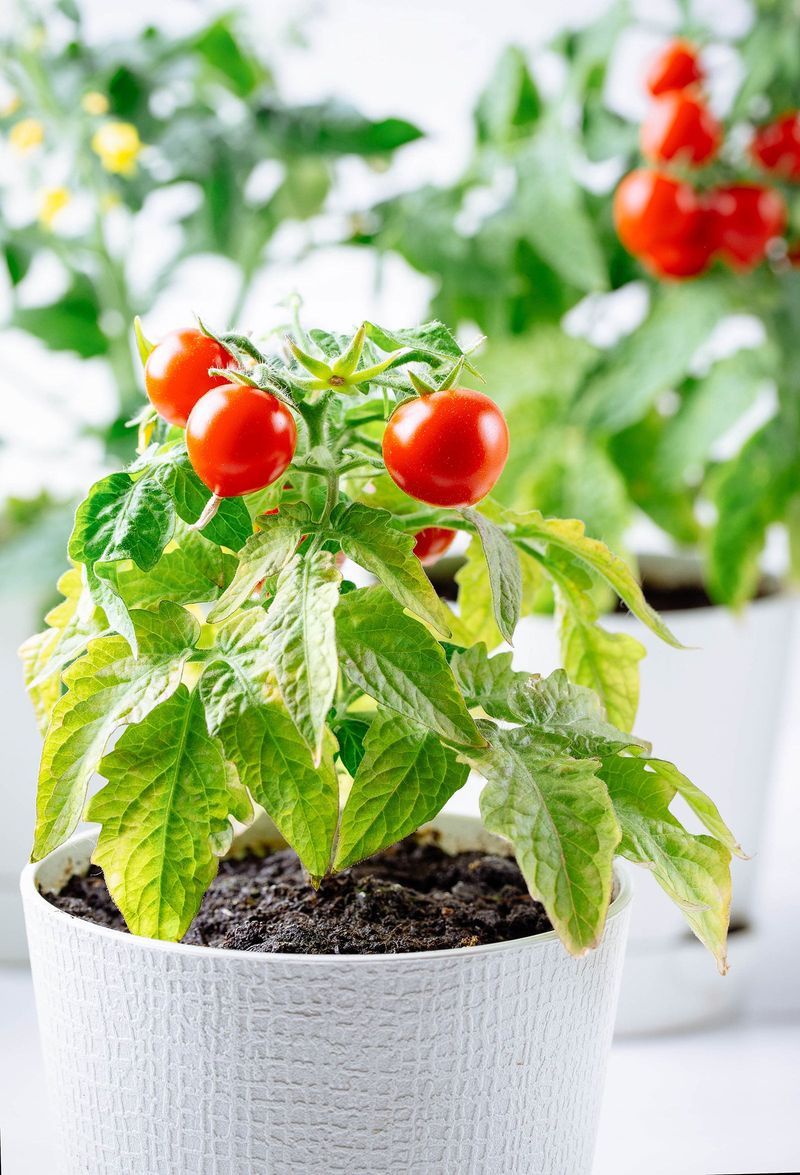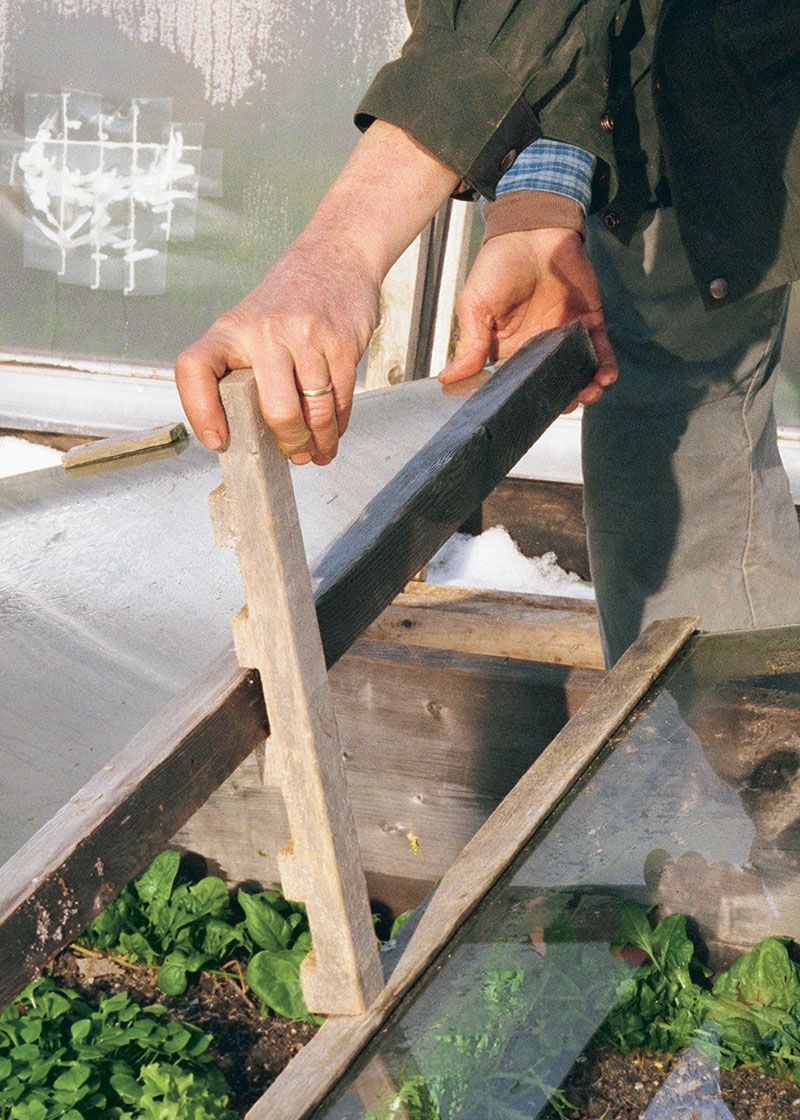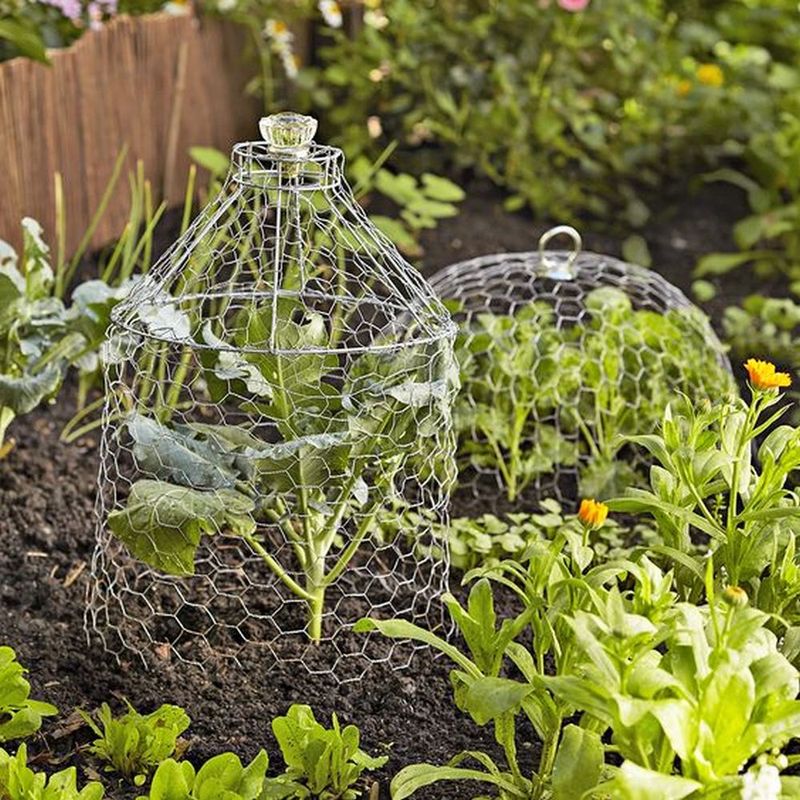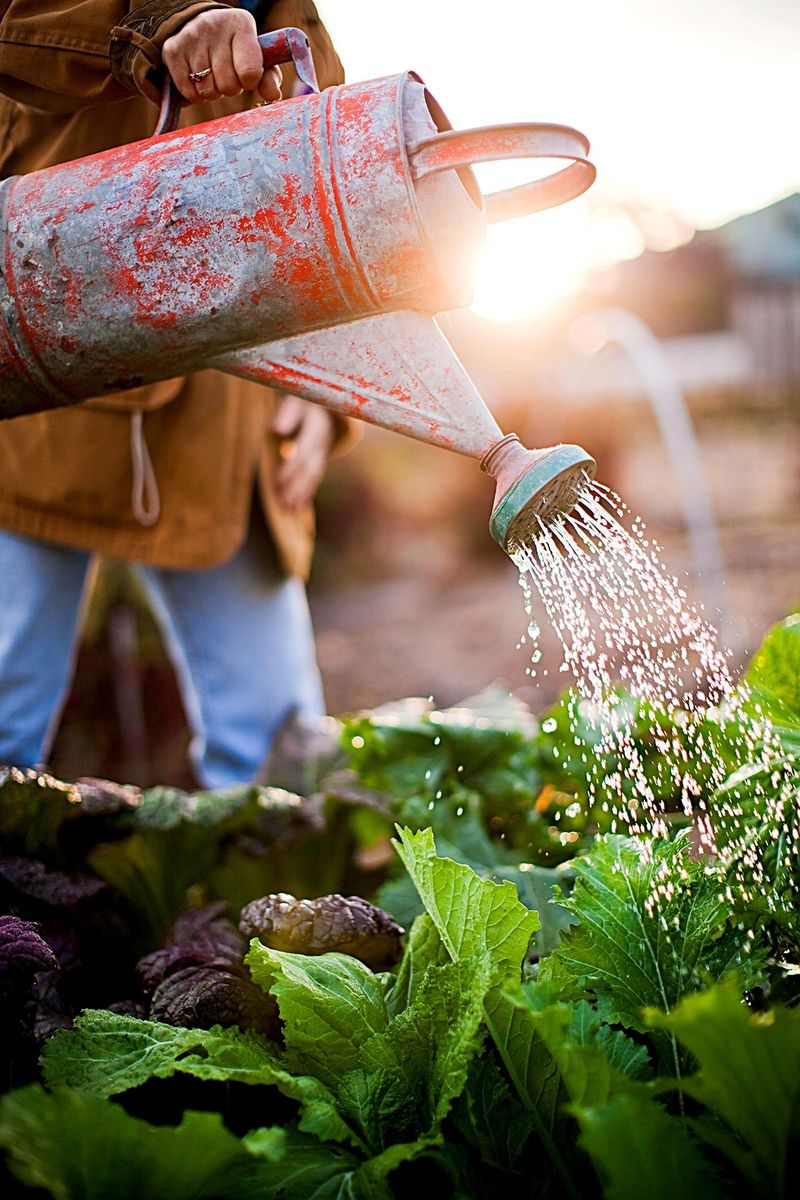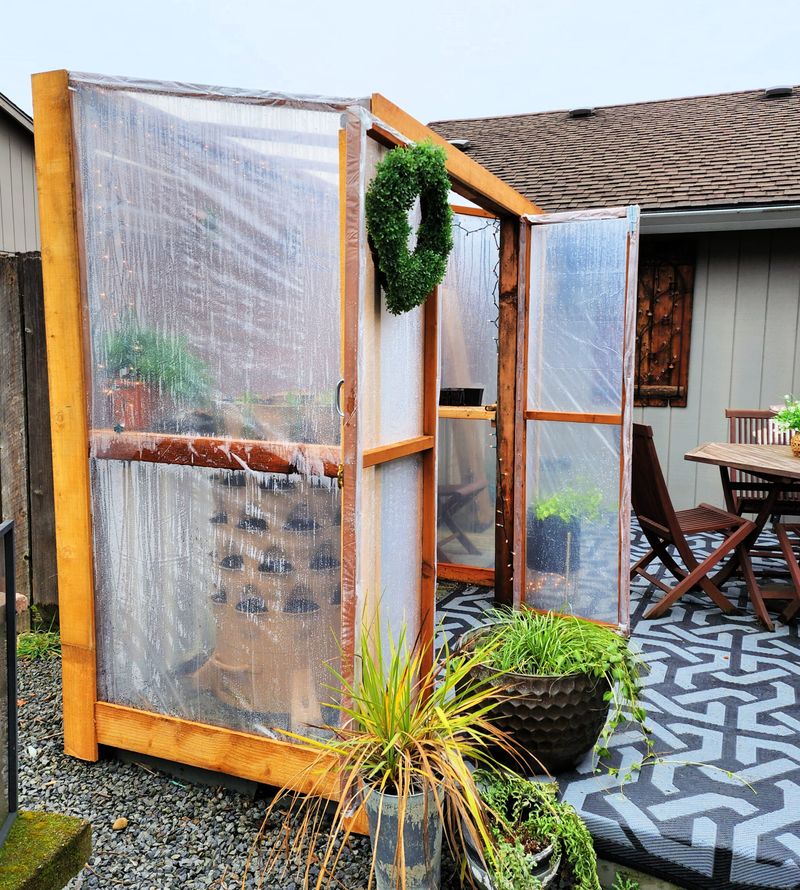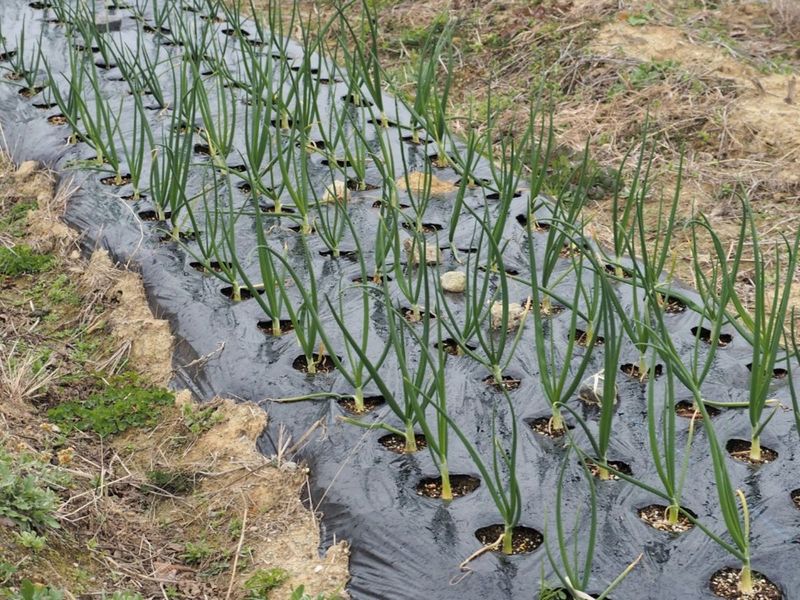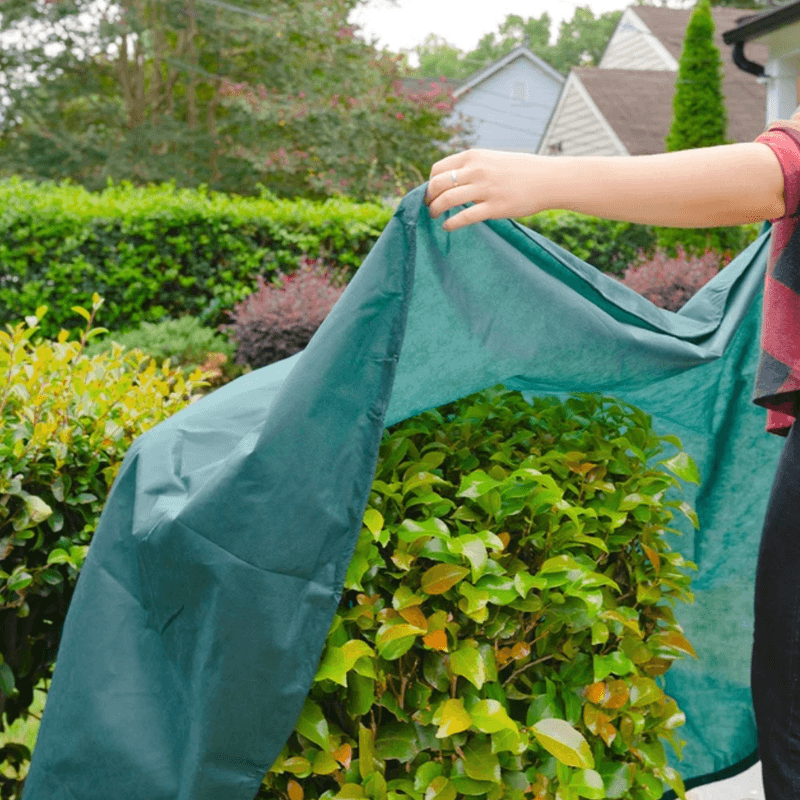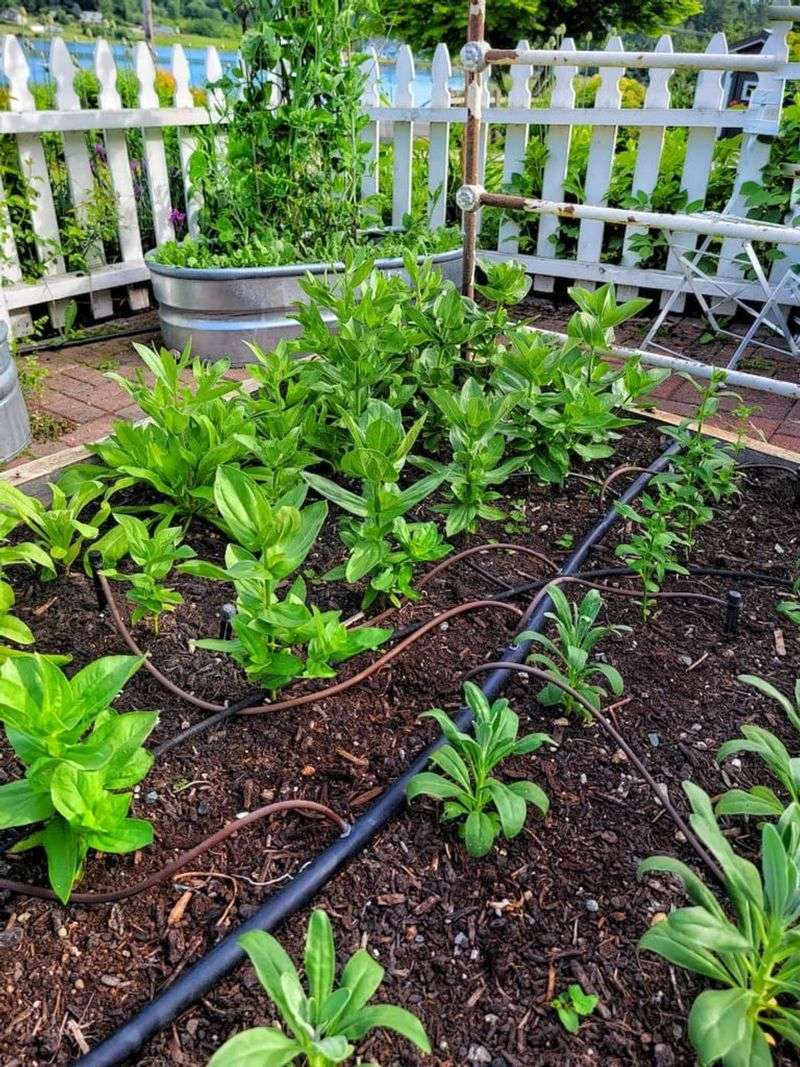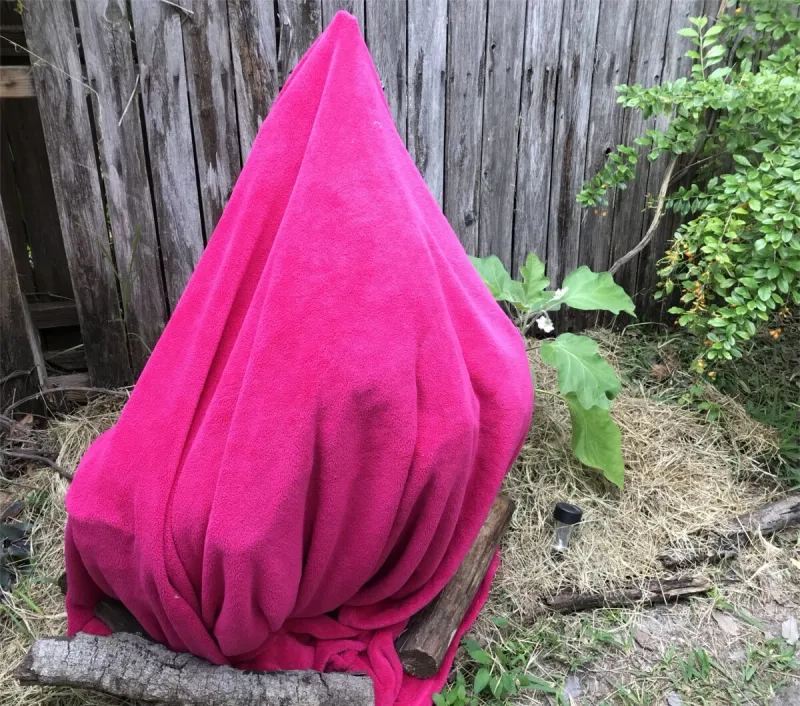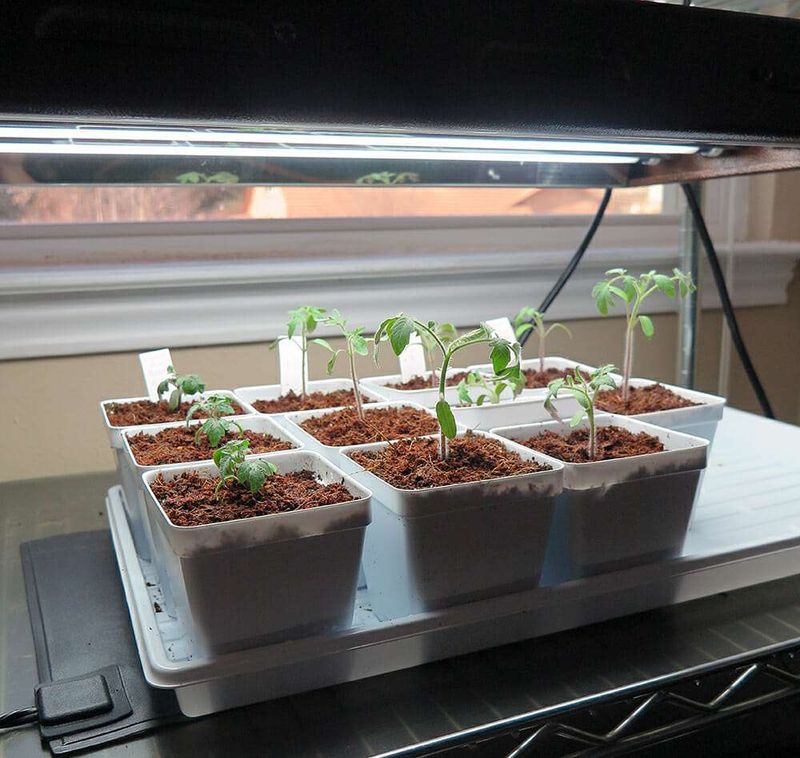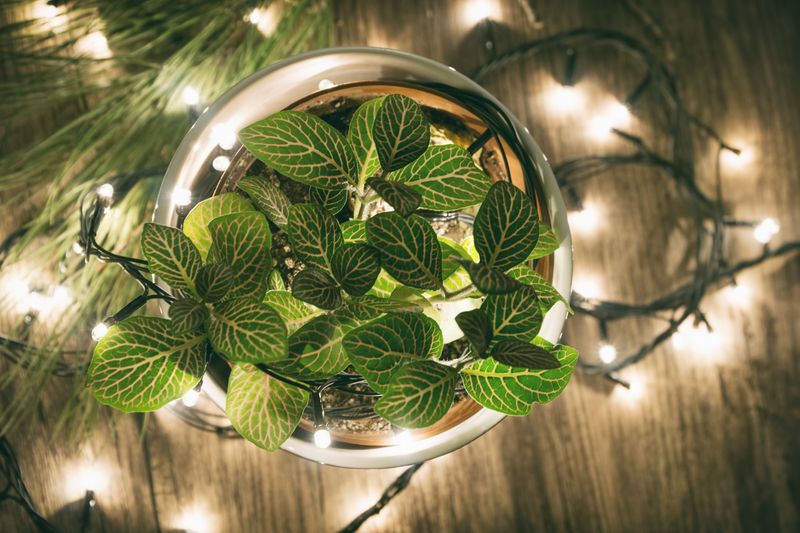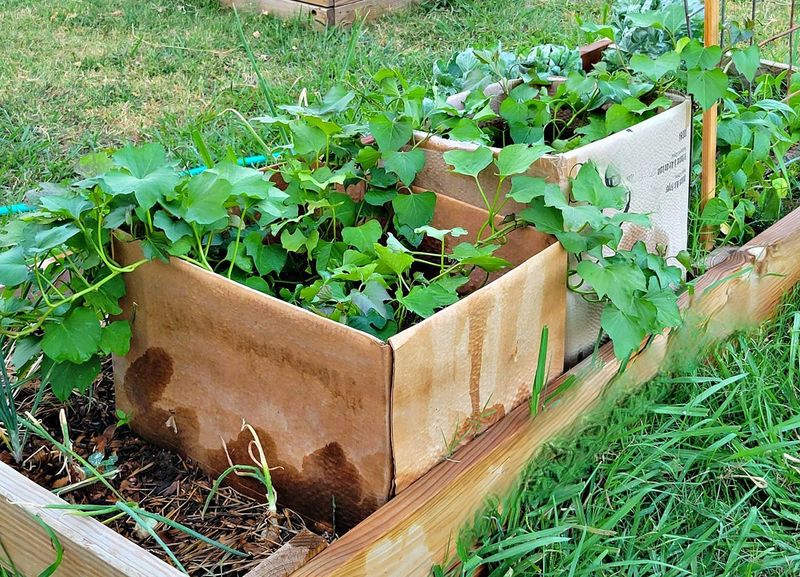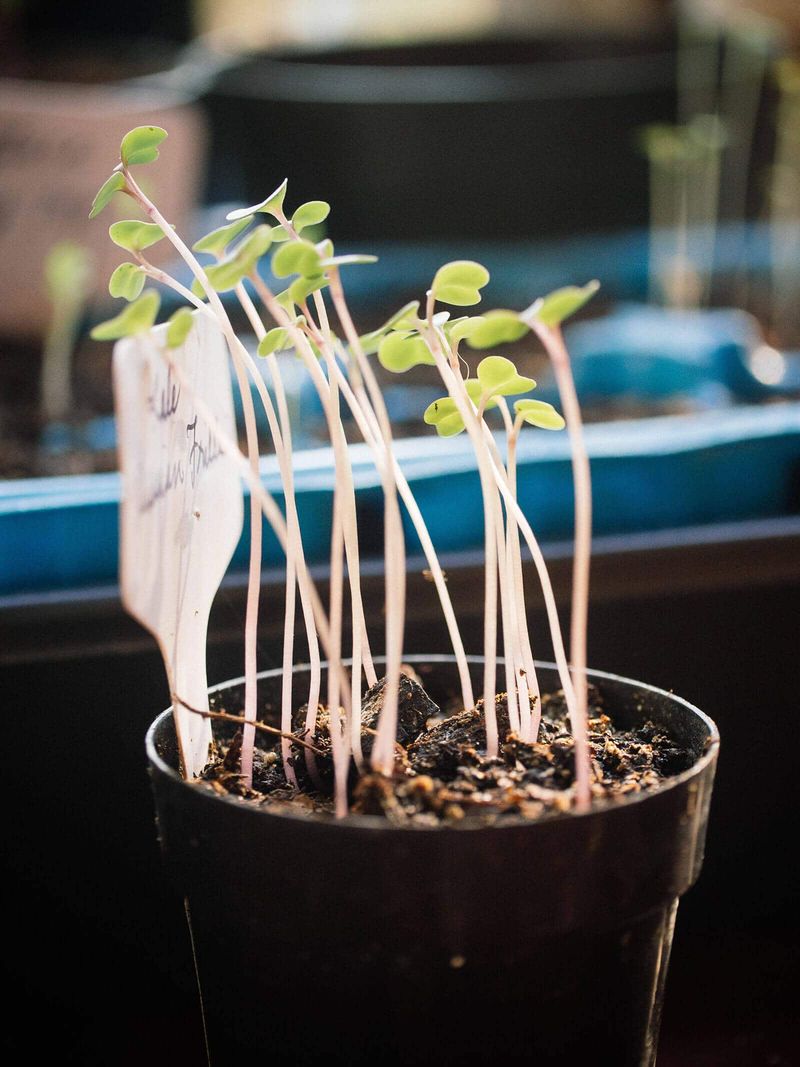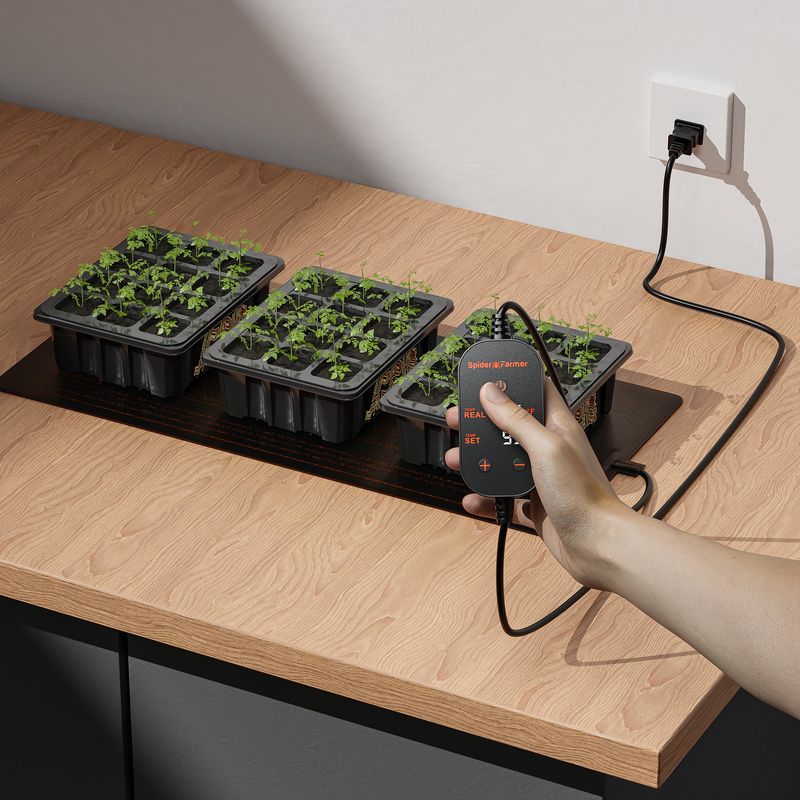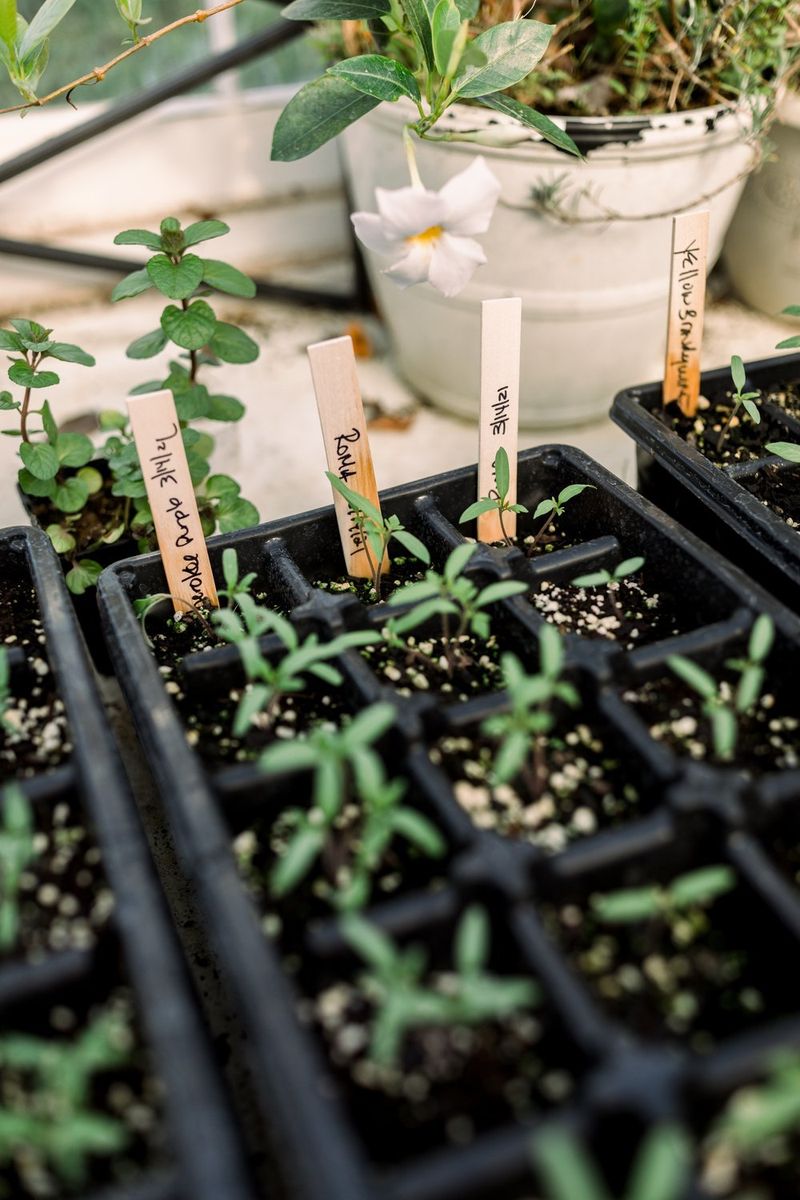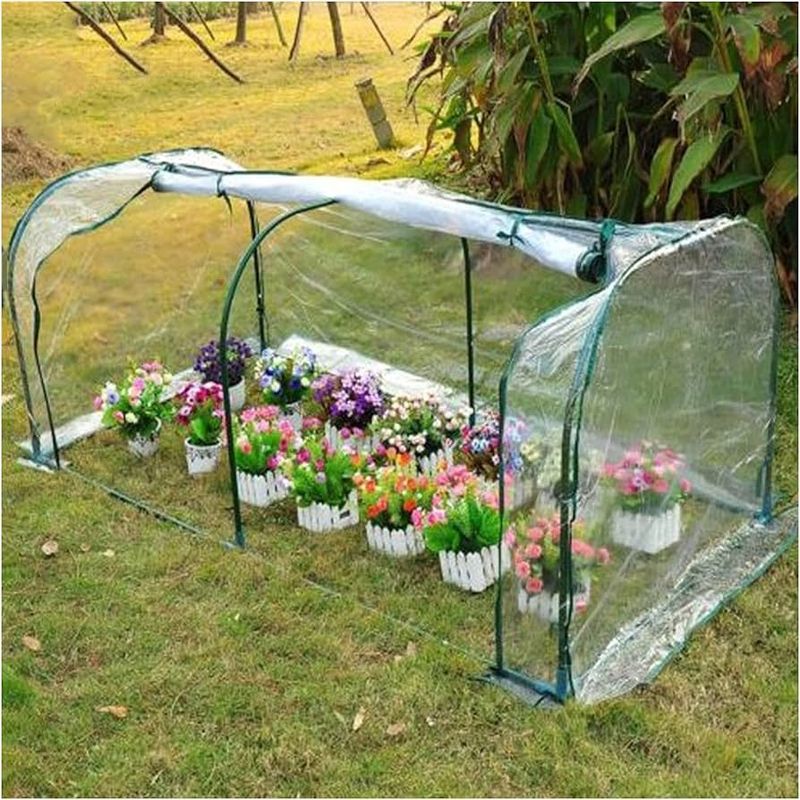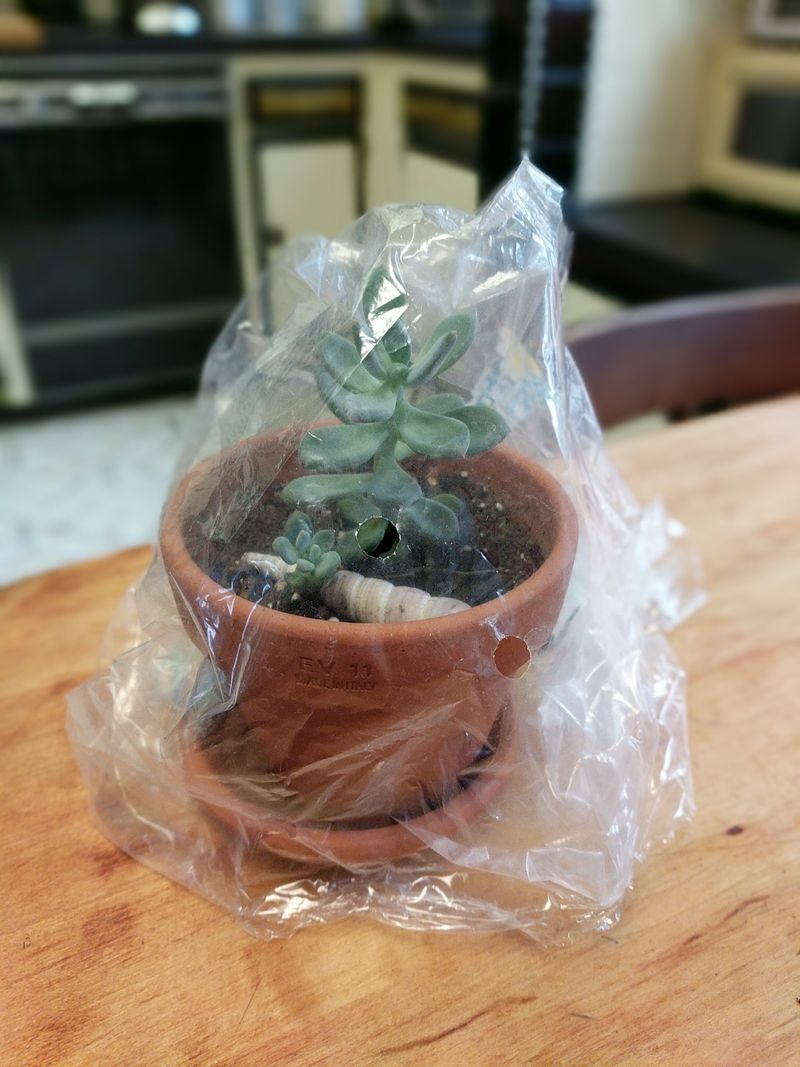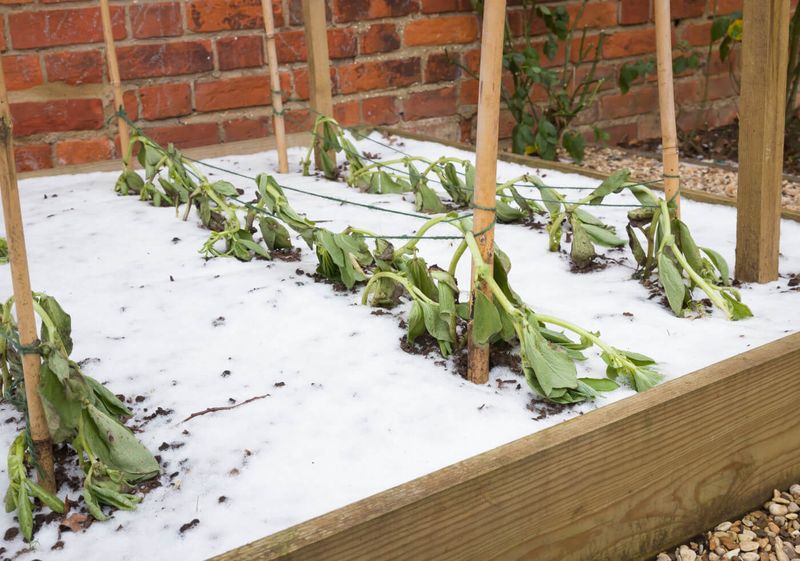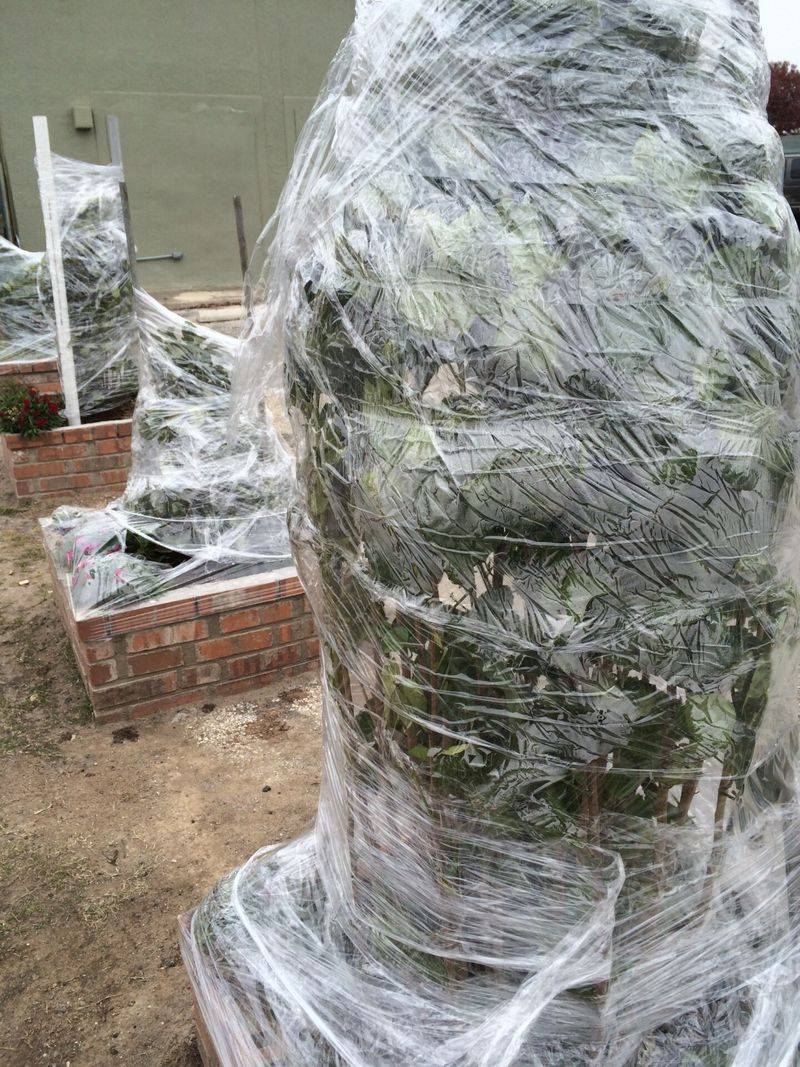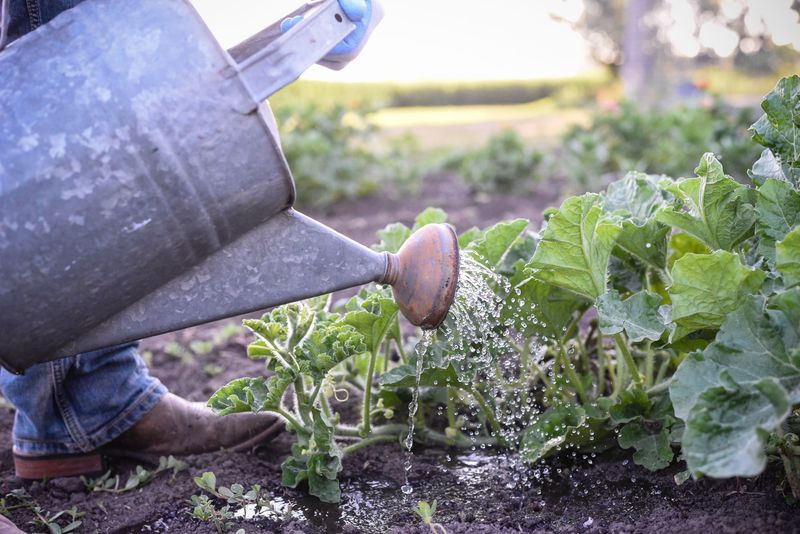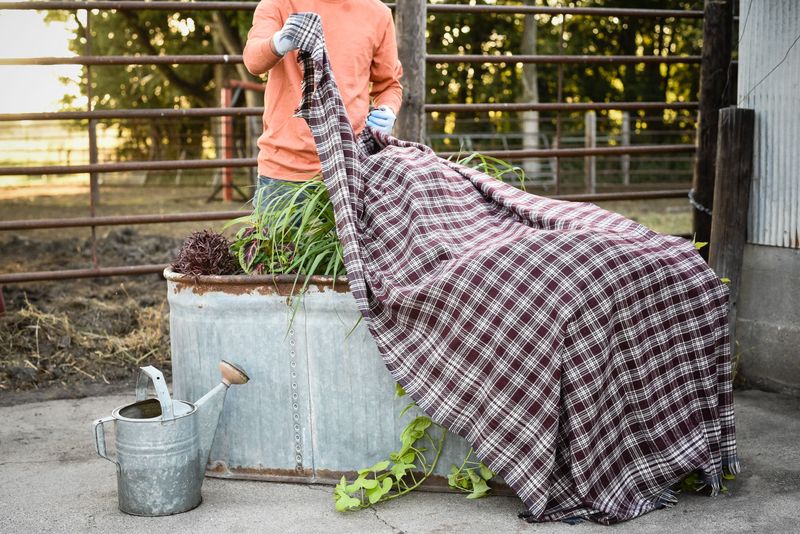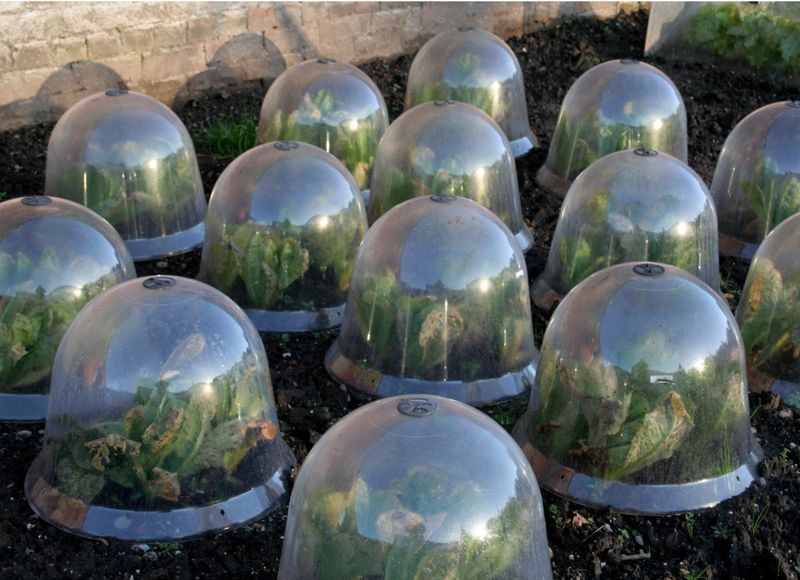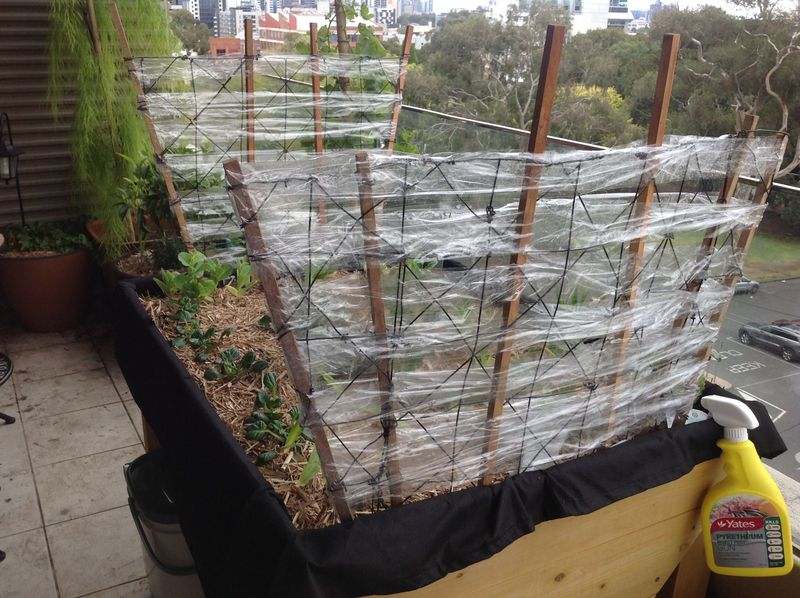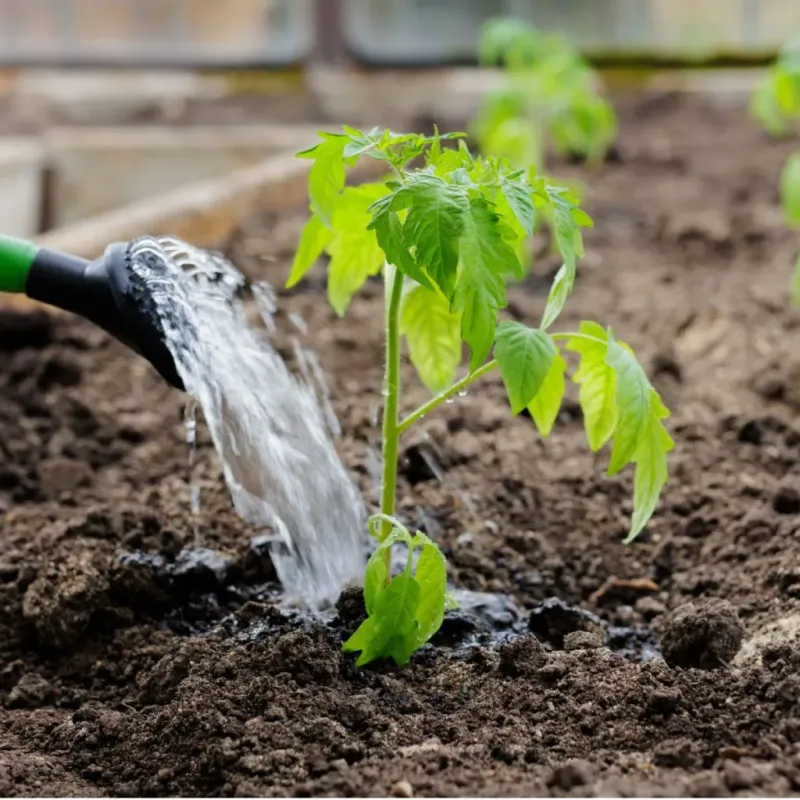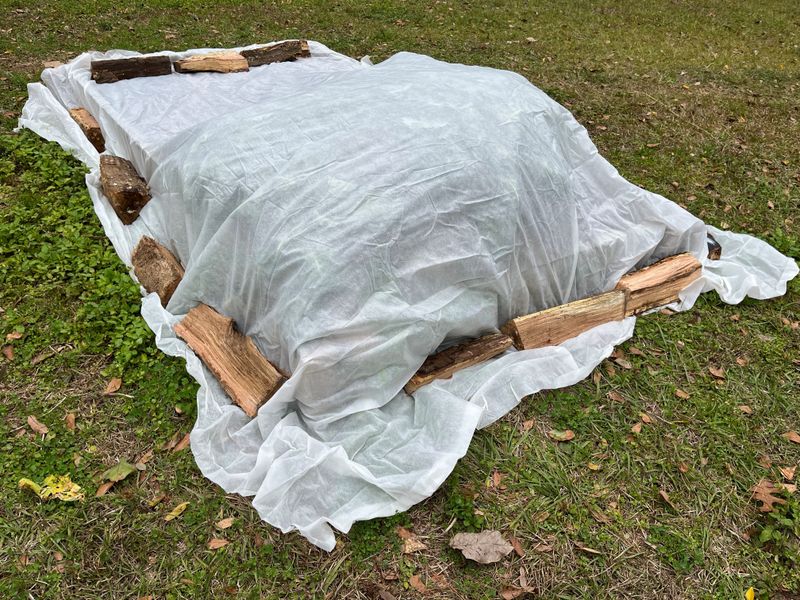Ah, young plants. Those eager little sprouts that promise to turn your garden into a masterpiece. But before they bloom, there’s that pesky late frost, nature’s way of throwing a little curveball at us gardeners.
Trust me, I’ve learned the hard way. Like the time I forgot to cover my tomatoes and woke up to sad, frozen plants. Oops!
But don’t worry, we’ll explore clever ways to protect your precious greens, filled with practical tips and funny mishaps along the way. Get ready for some laughs as we dive into this frost-fighting adventure together!
1. Use Frost Cloths
The morning chill can be deceiving, hinting at warmth but masking frost’s secret plans. Those tomato plants, seemingly safe, benefit from a simple frost cloth.
With its protective embrace, the cloth becomes a barrier against frost’s icy grip. Suddenly, the plants feel like they’ve donned a warm sweater, ready to face the cold.
It’s a neat trick that makes you wonder, why not give them a cozy blanket for those chilly nights? A classy solution for an age-old problem.
2. Cover Plants with Burlap
Burlap isn’t just for making sacks; it’s a hero in disguise against frost. That young lettuce patch, often at the mercy of temperature swings, finds solace under burlap’s rustic charm.
It’s funny, really, how something so simple can act as a shield, deflecting frost’s sneaky advances. One might think of it as burlap’s secret talent, turning from packing material to plant protector overnight.
Suddenly, having a few burlap pieces lying around seems like a savvy gardening hack!
3. Use Row Covers
Row covers: the undercover agents of the plant world. Beneath their translucent veil, young herbs like basil and parsley revel in a microclimate of their own.
It’s a cool setup, both simple and effective, making frost seem like a mere rumor. Who knew a lightweight fabric could play such a critical role in plant survival?
It’s as if these plants have their own personal bodyguard, escorting them through the chilly season unscathed. Sometimes, the simplest solutions are the most astonishing.
4. Bring Potted Plants Indoors
There’s something oddly thrilling about relocating potted plants indoors. That delicate geranium, for example, suddenly becomes a houseguest, avoiding the frost’s chilly breath.
It’s quite the logistical dance, shifting plants to safety, yet the satisfaction of outwitting the frost feels like victory.
It’s almost as if the plants, with their temporary indoor stay, are participating in a cozy sleepover. Who knew an indoor migration could be so classy and rewarding?
5. Use Cold Frames
Cold frames are like little greenhouses, offering sanctuary to vulnerable plants. I remember assembling one and feeling like an architect of plant protection.
Those young seedlings, nestled within, seemed to sigh with relief. It’s that moment you realize, with a few planks and a transparent lid, you’ve created a fortress against frost.
It’s as if you’ve unlocked a secret gardening level, where plants can flourish despite the chill. A fancy, DIY solution that makes you feel like a gardening genius!
6. Use Cloches
Cloche – a word that sounds as classy as it is practical. These glass domes turn any garden into a quaint spectacle, protecting young strawberries from frost.
It’s like placing your plants under delicate glass bells, transforming them into little treasures. A cloche’s charm lies in its simplicity, offering a touch of elegance while keeping frost at bay. Suddenly, your garden feels like a curated art exhibit, each plant a masterpiece on display.
7. Water Plants Well Before Frost
Watering before frost? It sounds counterintuitive, but there’s method in this madness. Those young peppers, for example, stand resilient, their roots basking in the warmth of moist soil.
It raises a smile, thinking that a simple watering can act as an invisible shield. Ever wondered why this works? Well, it’s like nature’s way of saying, ‘Stay hydrated; it’s going to be a frosty night.’
8. Mulch Around Plants
Mulch – the unsung hero of the garden. Those young cucumbers, tucked under a blanket of straw, seem to whisper thanks.
Mulch acts like nature’s own bedspread, insulating plants against frost’s unwelcome advances. It’s peculiar how something as mundane as straw can hold such power.
You pile it on, walk away, and suddenly, your plants have a fighting chance. A fancy way to turn everyday material into a gardener’s secret weapon!
9. Create a Makeshift Greenhouse
Building a makeshift greenhouse feels like playing with a giant Lego set. Young seedlings, like kale, find themselves in a protective bubble, sheltered from frost.
It’s a cool construction project, requiring nothing more than plastic sheeting and some stakes. You step back, admire your handiwork, and suddenly, there’s an air of pride.
It’s like giving your plants a temporary vacation home, proving that a little creativity goes a long way in gardening.
10. Use Plastic Sheeting or Tarps
Plastic sheeting might not win beauty contests, but who cares when it’s so effective? Those young carrots owe their survival to this unassuming protector.
As you drape it over them, there’s a sense of satisfaction, knowing that frost will have to find another target. It’s a quirky sight, rows of plants shielded under plastic, like they’re in their own little world.
11. Set Up Windbreaks
Wind can be frost’s accomplice, sneaking through gaps to chill young plants. That’s where windbreaks come in, standing firm like sentinels.
Those fragile spinach leaves seem to dance in relief, shielded from the biting breeze. It’s funny how something so simple can hold such sway.
You might think of it as nature’s way of saying, ‘I’ve got your back.’ A classy move that adds an extra layer of security to your garden’s defenses.
12. Plant in Raised Beds
Raised beds might just be a gardener’s best friend. I remember building one and feeling like I’d discovered gardening gold. Young radishes, perched above ground level, seem smug in their elevated haven.
It’s like giving your plants VIP seating, away from the frost’s icy fingers. This clever setup not only aids drainage but also provides a cozy microclimate.
13. Use Old Sheets or Blankets
Old sheets and blankets – not just for stuffing in a closet. Covering young plants, like beans, becomes a nostalgic journey into thriftiness.
It’s funny how these everyday items turn into armor against frost. Each sheet draped with care, crafting a patchwork of protection.
Suddenly, your garden looks like a cozy quilt festival. Who knew repurposing household textiles could feel so rewarding while keeping your plants snug and secure?
14. Employ Heat Lamps
Heat lamps are like little suns for young plants. Those delicate seedlings, basking in their glow, seem to radiate happiness. It’s a high-tech approach to fend off frost, leaving you feeling like a gardener from the future.
There’s a sense of satisfaction watching the warmth envelop your plants, ensuring their safety. It’s like having a secret weapon, a beacon of light in the battle against frost.
15. Use String Lights to Generate Warmth
String lights are more than just festive décor; they’re warmth warriors. Young herbs, like mint, relish in the soft glow that wards off frost.
It’s a delightful twist, turning your garden into a twinkling wonderland. It’s as if the lights whisper, ‘We’ve got this,’ encouraging you to embrace creativity.
Who knew your holiday decorations could double as plant protectors? A charming way to light up the night while safeguarding your precious plants.
16. Cover Plants with Cardboard Boxes
Cardboard boxes: not just for moving day. Ever thought about their frost-fighting potential? Young plants, like peas, find refuge beneath their sturdy walls.
It’s a quirky sight, your garden turned into a miniature box city. Makes you wonder, why stop at storage when they can be frost shields too?
The simplicity is astonishing, turning everyday items into a gardener’s ally. Who would’ve thought that cardboard could save the day?
17. Use Plant Collars
Plant collars, those nifty rings of protection, bring a smile to any gardener’s face. Young tomatoes stand proudly, their bases snugly wrapped.
It’s like giving them a personal bodyguard, ensuring no frost can creep in. The simplicity is elegant, a fancy solution to a pesky problem.
You place them, step back, and suddenly, your garden feels like a fortress. A cool way to give your plants the upper hand against chilly nights.
18. Use Heat Cables or Mats
Heat cables and mats are like the electric blanket of the plant world. Those young seedlings, resting on warm soil, seem to sigh in contentment. It’s a high-tech twist that leaves you feeling like a gardening wizard.
There’s something oddly satisfying about providing warmth from below, ensuring frost doesn’t stand a chance. You wonder, why didn’t I think of this sooner?
19. Move Plants to Sheltered Locations
Playing musical chairs with plants is oddly thrilling. I remember the shuffle, moving pots to shelter before frost struck.
That young basil, once vulnerable, now safely tucked under a porch. It’s almost as if they know they’re in for a treat, escaping frost’s chill.
This game of relocation, while amusing, proves to be a savvy strategy. It’s funny how simply changing locations can spell the difference between frostbite and survival.
20. Build a Temporary Greenhouse Structure
Constructing a temporary greenhouse feels like crafting a secret base. Those young plants, like lettuces, thrive under this protective canopy.
It’s a project that demands creativity, leaving you feeling like a DIY pioneer. There’s pride in knowing you’ve built a shield against the elements.
The satisfaction of seeing your plants flourish beneath this structure is unparalleled. Who knew a few materials could turn your garden into a frost-free zone?
21. Do Not Use Plastic Directly on Plants
Plastic and plants. A pairing that needs distance. Ever pondered why direct contact is a no-go? Those young beans, if smothered, would suffocate under plastic’s embrace.
It’s a quirky rule, but one that saves plants from becoming victims. The thought of frost burn is enough to make you cautious, keeping plastic at bay.
22. Do Not Rely on Chemical Frost Protectants
Chemical frost protectants can be tempting, but trust me, they’re not the answer. Young plants, like lettuce, deserve natural care, not a chemical bath.
I often wonder why anyone would choose a quick fix over nature’s methods. It’s like trading a genuine smile for a forced one.
There’s humor in the thought that sometimes, the simplest solutions are the most effective. Natural approach often yields the best results.
23. Do Not Cover Plants with Materials That Trap Moisture
Moisture is frost’s secret ally, a sneaky partner in crime. Those young peppers, if trapped under a soggy shroud, face a chilly doom. It’s an amusing paradox, protection that turns perilous.
Choosing breathable fabrics over moisture-trapping ones spells the difference between plant haven and hazard. It’s like choosing a sunhat over a wool cap in summer.
24. Do Not Let Plants Stay Too Wet Before Frost
Overwatering can be the plant’s downfall. I learned this lesson when my young spinach became frost-ravaged. Excess moisture freezes, and suddenly, your plants face a frosty fate.
It’s the irony of kindness turned cruel, the well-intentioned watering gone rogue. You chuckle, realizing that sometimes less is more, especially when frost lurks.
This tale of too-much-water serves as a gentle nudge to find that perfect balance, reminding us that moderation is key.
25. Do Not Place Coverings Too Early in the Day
Timing is everything in gardening. Cover plants too early, and you might trap warmth inside, causing frost damage later. Those young peas, if covered at noon, become unsuspecting victims of their own climate.
It’s a curious dance of temperature and timing, where patience is your ally. You smile at the paradox, learning that hasty actions might backfire.
26. Do Not Leave Plants Uncovered at Night During Frosts
Forgetting to cover your plants is like leaving the window open during a storm. It’s an easy mistake, but one with serious consequences.
Picture those young tomatoes, left vulnerable to a sudden frost overnight, slowly wilting in the cold. It’s a simple slip, yet the results can be frustrating.
Just the thought of forgetting that tarp or sheet is enough to make you cringe. It’s a gentle reminder that in gardening, a little bit of care and attention can make all the difference in protecting your plants.
27. Do Not Use Reflective Materials on Frost-Sensitive Plants
Reflective materials and frost-sensitive plants? A match made in gardening mishaps. Those young zucchinis, if shielded with reflective covers, might face unintended consequences.
It’s an interesting thought, shielding plants only to reflect frost’s bite. The irony is not lost on you, making you chuckle at the visual. A crucial tip to avoid unintended frostbite in your garden.
28. Do Not Neglect Wind Protection for Young Plants
Wind is an often overlooked adversary in the frost war. Those young cabbages, if left unguarded, might shiver under its influence. It’s an amusing oversight, thinking frost is the sole enemy.
The gusts breeze through, and suddenly, you’re scrambling for windbreaks. Ever pondered how a simple shield could make such a difference?
It’s a light-hearted reminder that in the world of gardening, teamwork between wind and frost should never be underestimated.
29. Do Not Overwater After Covering Plants
Overwatering, post-coverage, is like adding fuel to a fire. Those young radishes, suffocating under excess moisture, face an icy doom. It’s a quirky twist. Too much love leading to frostbite.
You chuckle at the irony, realizing that restraint is key once plants are covered. It’s a funny little lesson in balance, reminding you that sometimes, less is indeed more.
30. Do Not Use Non-Breathable Fabrics
Non-breathable fabrics are a garden’s worst enemy. Those young beans, trapped under such a cover, might suffocate in their own moisture.
It’s a cautionary tale, choosing the wrong fabric and paying the price. You smile at the irony, realizing that not all fabrics are created equal.
A humorous reminder that sometimes, the simplest choices carry the most weight. A gentle nudge to prioritize breathability in your garden’s winter wardrobe.

